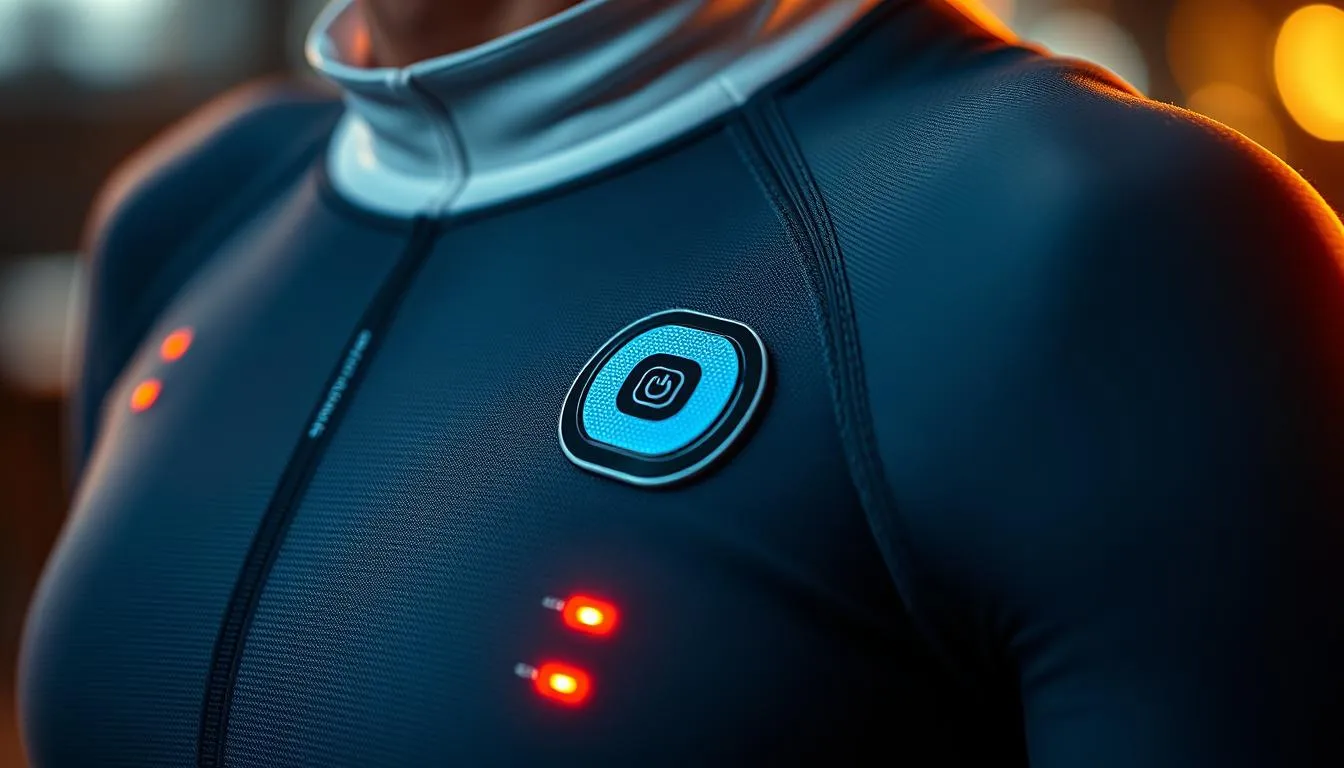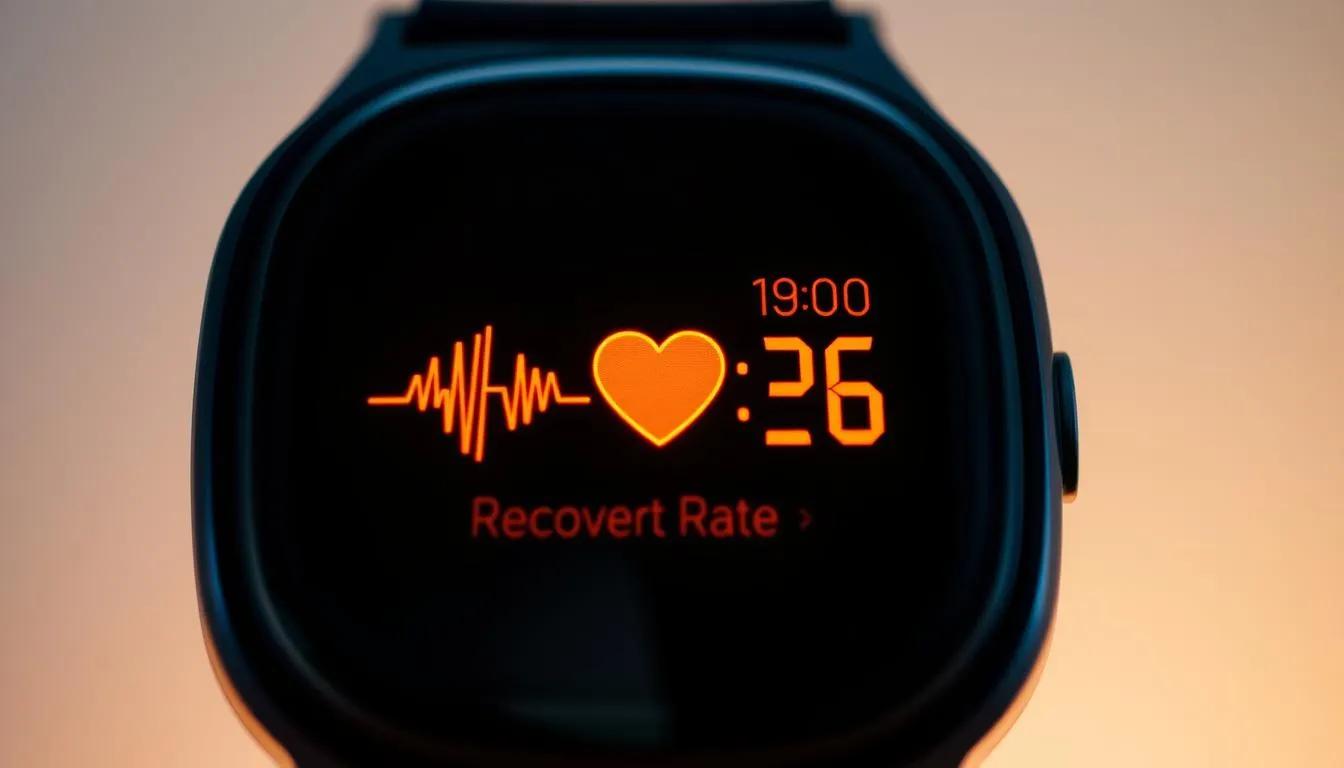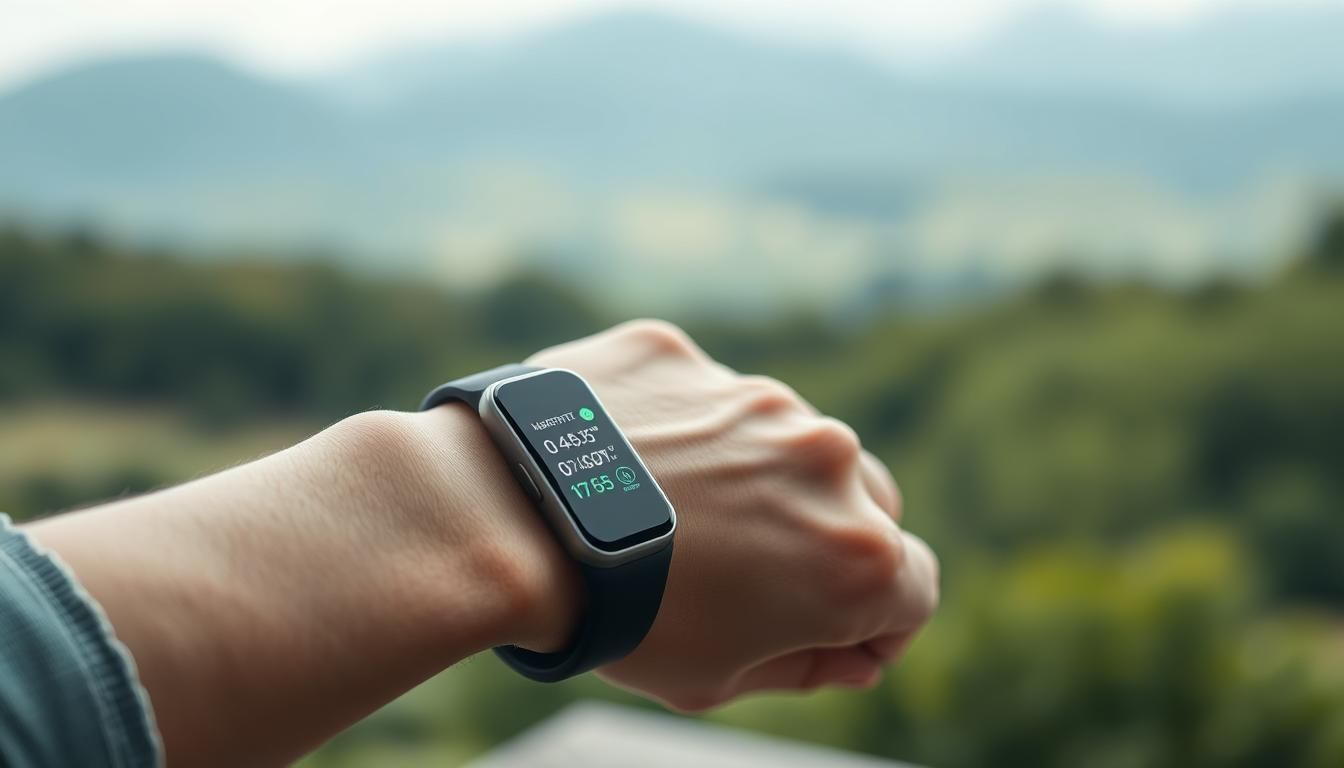Surprising fact: about 20% of people in the United States already own a smart device that tracks daily activity, and many see concrete gains in steps and weekly active minutes.
Today’s wearable technology turns everyday physiology into clear, actionable insights you can use to train smarter and improve performance. These devices read sleep, heart and breathing patterns, muscle activity, and movement to guide safer training loads, and consider exploring smart recovery protocols for additional techniques.
Adoption is mainstream in the U.S., with watches, rings, smart clothing, and clips making it easy to collect useful health data. The payoff is immediate: more consistent activity, clearer goals, and nudges that keep momentum without overdoing it.
This guide will connect the numbers in your app to real decisions. Expect practical tips on personalized rest windows, balancing workload, and spotting stress early so you can adjust before setbacks occur.
Key Takeaways
- About one in five Americans uses a smart tracking device.
- Modern tech turns complex body signals into simple trends.
- Tracking sleep, hydration, and movement helps guide training loads.
- Users often increase daily steps and weekly active time.
- Devices support both health and long-term performance.
Why wearable recovery sensors matter right now for athletes and fitness enthusiasts
Immediate body data now helps athletes avoid guesswork and reduce risk during workouts. As pricing drops and app experiences improve, these tools move from niche labs to everyday training kits for weekend athletes and pros alike.
 Real-time alerts can flag when heart effort or breathing patterns suggest you should slow down, hydrate, or rest. That immediate safety value keeps sessions productive and prevents overtraining.
Real-time alerts can flag when heart effort or breathing patterns suggest you should slow down, hydrate, or rest. That immediate safety value keeps sessions productive and prevents overtraining.
Devices drive behavior change. Studies show people add roughly 1,300 steps per day and nearly an extra hour of moderate-to-vigorous activity each week when they track consistently.
- Now matters: better components, clearer apps, and lower costs make tracking practical for every budget.
- Safety first: real-time feedback reduces exertion-related risk on hard days.
- Adapt on the fly: respond to sleep debt, travel, or heat with smarter session choices.
- Build consistency: daily insights help keep gains steady and avoid burnout.
In short, modern technology and devices give clear insights and tangible benefits for long-term health and performance. You don’t need pro gear to start training smarter today.
What are wearable recovery sensors and how do they fit into today’s wearable technology
Modern training relies on compact devices that read your body’s signals and translate them into action. These tools range from wrist trackers to smart insoles and textile-integrated clothing. Together, they form an ecosystem that gives athletes practical information for day-to-day decisions, and consider exploring comprehensive biofeedback systems for additional techniques.

From fitness trackers and smartwatches to smart clothing and shoes
Definition: electronic tools embedded in watches, rings, apparel, insoles, and patches that measure the body’s signals relevant to post-exercise restoration.
Key recovery-focused metrics you need to know
- Heart rate and heart rate variability (HRV) — core markers of strain and readiness.
- SpO2 and respiration rate — oxygen and breathing patterns that affect endurance.
- Muscle activity and motion quality — EMG, acceleration, stride, and balance data that flag fatigue.
Real-time data and app feedback that guide safer, smarter training
Apps transform raw readings into daily guidance: readiness scores, trend charts, and alerts. This feedback pairs passive monitoring with coaching-style nudges for pacing, rest, and hydration.
| Device type | Common metrics | Typical application |
|---|---|---|
| Fitness trackers & smartwatches | Heart rate, HRV, SpO2, steps | Daily monitoring and readiness scoring |
| Smart clothing & insoles | EMG, stride, balance, pressure | Technique tuning and muscle load tracking |
| GPS pods & motion trackers | Speed, acceleration, gait | Session pacing and fatigue detection |
Need to know: context matters — the same pace can feel easy on a rested day and hard when sleep is poor. For a deeper scientific view, see this scientific review.
How wearable devices and sensors capture your body’s recovery signals
Sensors built into today’s sport tech convert pulses, breaths, and motion into actionable monitoring insights.
Optical vs. ECG for heart tracking: Optical PPG reads blood flow at the skin and is convenient for all-day use. ECG captures electrical activity and yields cleaner intervals for precise heart rate variability analysis.
Heart and breathing metrics that matter
Heart rate variability and rate variability trends show autonomic balance. Higher variability over time usually means better readiness, so apps use trend lines rather than single readings.
Respiratory rate from chest straps or smart garments and SpO2 from pulse oximetry complement heart metrics. Together they paint a fuller picture of internal load and stress.
Motion, muscle, pressure, and external load
- IMUs (accelerometers, gyros, magnetometers) quantify acceleration, rotation, and orientation for technique and impact checks.
- EMG detects muscle activation and fatigue, guiding targeted care.
- Pressure insoles reveal asymmetry and force to protect joints.
- GPS logs pace, elevation, and route to tie physiology to terrain and effort.
- Hydration estimates come from microfluidic sweat patches, impedance, or colorimetric tests.
Top benefits for recovery and performance you can gain today
Real-time metrics let you dial intensity up or down to protect performance and speed gains. Using live feedback makes training smarter and safer. You get clear signals to guide each session instead of guessing.

Optimizing training load with real-time monitoring to avoid overtraining
Hit the right effort levels by watching heart rate and breathing cues. Stay in target zones to build fitness while avoiding excess fatigue.
Personalized recovery windows using HRV, respiratory rate, and oxygen levels
Trend-based HRV and oxygen measures create individual rest windows. Follow those windows to time hard sessions for bigger gains and fewer setbacks.
Muscle-focused insights with EMG and smart clothing for targeted recovery
EMG flags overworked muscle groups so you can focus mobility or soft-tissue work where it matters most. That targeted approach speeds repair and maintains performance.
VO2 and effort zones to balance intensity and accelerate adaptation
- Use VO2 and pace zones to progress aerobic capacity methodically.
- Track hydration and electrolytes from sweat to lower cramp risk and support muscle function.
- Translate live data into weekly structure: hard/easy balance, deloads, and rest days.
Need to know: combine these insights with how you feel. Let technology and wearables confirm perceived exertion so small mid-session adjustments improve outcomes and speed recovery.
Reducing injury risk and accelerating return-to-play with data-driven insights
When training load spikes suddenly, soft-tissue injuries often follow — but data can warn you first.
Movement trackers using GPS and IMUs quantify energy, position, impact, and balance. That information flags sudden spikes and asymmetries that raise injury risk.
Workload tracking and movement patterns that flag elevated risk
Track workload over time to spot volume or intensity jumps and adjust training before problems surface.
- Detect asymmetry or impact trends from IMU and GPS data that suggest technique or load issues.
- Let devices automate trend charts so coaches and clinicians share a single view of progress.
- Fold objective metrics into weekly goals: gradual progressions, planned deloads, and targeted mobility.
Comparing pre- and post-injury metrics to guide safe progression
Compare pre-injury baselines with post-injury metrics to build phased return-to-play plans. Use those metrics as clearance benchmarks rather than guesswork.
“Let the data confirm your next step — if metrics stall or regress, pause and add support such as physical therapy or targeted strength work.”
Beyond workouts: sleep, hydration, and health indicators that impact recovery
Small daily habits—sleep timing, fluid intake, and breathing—shape how well you bounce back after hard sessions.
Sleep duration and quality trends to support restoration
Some devices track sleep duration and give sleep quality scores, but accuracy varies by model. Use trends rather than single-night scores to guide habits.
Treat sleep as a foundation: follow duration and wake-episode patterns to time hard sessions and improve next-day performance.
Sweat and electrolyte checks for hydration and cramp prevention
Sweat analysis can show sodium, potassium, chloride, and markers like lactate. Microfluidic channels route sweat to tiny assays for on-the-go readings.
Electrical impedance also estimates fluid levels by measuring resistance changes. Let device prompts guide when to take fluids or add sodium, especially in heat or long events.
Respiratory rate and oxygen saturation for endurance and muscle support
Pulse oximetry (SpO2) and respiration rate help gauge oxygen delivery to working muscle and post-exercise recovery needs.
Use these checks with heart and pace data to tune fueling, pacing, and breathing work during long runs, rides, or hikes.
Practical tips:
- Track sleep trends, not single nights; see a clinician for signs of sleep apnea.
- Tailor fluids and sodium using sweat or impedance insights in heat or at altitude.
- Watch oxygen and respiratory rate over time to spot fatigue or illness early.
| Indicator | What it shows | Actionable use |
|---|---|---|
| Sleep duration & awakenings | Restoration and sleep quality trends | Delay hard sessions after several poor nights; improve bedtime routine |
| Sweat electrolyte profile | Sodium, potassium, chloride, lactate | Adjust drink mix and salt intake during long or hot sessions |
| Electrical impedance | Estimated fluid levels | Prompt drinking or rehydration strategies |
| SpO2 & respiratory rate | Oxygen delivery and breathing strain | Modify intensity or seek medical advice if levels fall |
What to consider before you rely on wearable devices for recovery
Before you trust real-time tracking for big decisions, weigh what the tools actually measure and how reliable those readings are.
Accuracy depends on fit, device age, and how you wear trackers. Old or poorly fitted clothing and pads can skew rate and HRV-style numbers. That can lead to wrong training choices.
Cost is more than the sticker price. Many advanced features sit behind subscription apps. Factor in long-term fees when you compare devices.
Privacy matters. Review how your information is stored and shared. Use security settings and avoid linking data to untrusted third parties.
Mental health can be affected by constant monitoring. If tracking triggers anxiety or compulsive behaviors, cut back or consult a professional.
- Check accuracy claims: poor fit or old hardware can misread data.
- Include subscriptions in total cost of ownership.
- Read privacy policies: know who can access your information.
- Scale back metrics if tracking harms your mindset.
- Understand fall detection limits—multiple-sensor setups usually perform better.
- Choose a device you’ll wear daily, not one with unused features.
| Consideration | Common pitfalls | Practical check | When it matters |
|---|---|---|---|
| Accuracy | Poor fit, old firmware, single-sensor limits | Compare independent reviews and test readings vs. a trusted monitor | When making training or medical decisions |
| Cost & subscriptions | Low device cost but high recurring fees | Map 1–3 year costs before buying | If you need advanced analytics long-term |
| Privacy & mental health | Broad data sharing; tracking anxiety | Limit sharing, use privacy settings, and reduce metrics tracked | For sensitive health info or those prone to compulsive tracking |
Wearable recovery sensors: how to choose, use, and act on the data
Start with your goals. Decide whether you want endurance gains, strength improvements, general fitness, or a safe return-to-play plan. That choice narrows which device and features matter most.
Match devices to goals: heart rate monitors, fitness trackers, smart clothing
For intensity control, pick heart-centric tools like heart rate monitors or HRV-capable trackers. For technique and muscle work, add IMU- or EMG-enabled smart clothing or similar monitors.
Practical picks:
- Endurance: reliable heart rate monitors and GPS-enabled trackers.
- Technique: IMU/EMG smart clothing or motion trackers to check form.
- General fitness: a simple fitness trackers platform with daily readiness scores.
Turn metrics into action with apps, coaching, and real-time feedback
Prefer platforms that translate data into clear actions: alerts, guided sessions, and daily recommendations. Real-time input and coaching can improve safety and performance during activity.
“Use morning readiness checks, mid-workout feedback, and post-session notes to make steady gains.”
Action checklist:
- Standardize measurement time and keep firmware updated.
- Log sleep, nutrition, and stress in apps so trends make sense.
- Work with coaches or groups to interpret trends and set weekly goals.
For evidence-based context on physiology and monitoring, see this scientific review.
Conclusion
Use data from heart rate, motion, and oxygen checks to make clear, practical training choices each day. Combine PPG or ECG heart readings with HRV trends, respiration, SpO2, EMG, IMU/GPS movement, and sweat or impedance tests so you see both real-time alerts and long-term patterns.
Keep health first: watch trends, not single numbers, and treat devices and sensors as tools that guide safer decisions. Evidence shows this approach can raise daily steps and add almost an hour of weekly moderate activity for many users.
Choose a small set of metrics, use consistent sessions for like-for-like comparisons, and work with coaches or clinicians when stakes are high. With smart use of technology and clear app feedback, you can lower risk and lift performance while protecting overall health.
FAQ
What do these devices actually measure to track recovery?
Most systems monitor heart rate, heart rate variability (HRV), blood oxygen (SpO2), respiratory rate, and movement. Some add muscle signals (EMG), motion sensors (IMU), GPS for load, and sweat or electrolyte data. Together, these metrics show stress, fatigue, and readiness to train.
How accurate are optical heart rate monitors compared to ECG chest straps?
Optical wrist sensors work well for steady states and daily trends but can lag during rapid intensity changes. ECG chest straps remain the gold standard for beat‑to‑beat accuracy and HRV. Choose the tech based on your sport and the precision you need.
Can HRV tell me when to rest or push hard?
HRV offers a snapshot of autonomic balance—higher values often mean good recovery; lower values suggest stress or fatigue. Use HRV trends alongside sleep, soreness, and performance data rather than a single reading to guide training decisions.
Do smart clothing and EMG provide useful muscle recovery insights?
Yes. Textile sensors and EMG measure muscle activation and fatigue patterns, helping you spot imbalances or overused muscles. That information can guide targeted rest, mobility work, or strength adjustments to reduce injury risk.
Will tracking recovery metrics improve performance?
When used properly, recovery monitoring helps optimize training load, prevent overtraining, and time hard sessions for maximal adaptation. It’s most effective when combined with coaching, individualized plans, and consistent data collection.
How should athletes combine device data with coaching and apps?
Sync device data with a trusted app or sport platform and share trends with a coach. Real‑time alerts, suggested recovery windows, and automated summaries make it simpler to act on metrics and adjust workouts based on readiness.
Are there privacy or data‑security concerns with these systems?
Yes. Biometric data is sensitive. Check app privacy policies, data storage locations, and sharing permissions. Prefer vendors who offer encryption, clear consent controls, and options to delete or export your data.
How much should I expect to spend for reliable monitoring?
Prices vary. Entry fitness trackers and basic chest straps are budget‑friendly. Advanced smart clothing, clinical‑grade ECG devices, and multisensor systems cost more. Balance accuracy, features, and how you plan to use the information.
Can these tools help prevent injuries or speed return‑to‑play?
Yes. Tracking workload, movement patterns, and asymmetries highlights elevated risk before symptoms appear. During rehab, repeating the same tests helps compare pre‑ and post‑injury metrics and shape progressive return plans.
How do sleep and hydration metrics fit into recovery monitoring?
Sleep duration and quality strongly influence recovery capacity and HRV. Hydration and electrolyte measures affect muscle function and cramp risk. Monitoring these factors alongside physiological data gives a fuller view of readiness.
Can recreational athletes benefit, or is this only for elite performers?
Recreational athletes gain value from personalized guidance just as pros do—especially to avoid overreach, recover faster, and track progress. Simpler devices and apps can deliver actionable insights without high cost or complexity.
What are the limitations of relying solely on device data?
Numbers don’t capture mood, motivation, or life stressors fully. Devices may misread signals and produce false positives. Always combine metrics with subjective feedback, sleep, nutrition, and professional advice when needed.
Which metrics should I prioritize based on my goals?
For endurance: HR, HRV, SpO2, and respiratory rate. For strength and power: EMG, movement sensors, and load tracking. For recovery planning: HRV trends, sleep quality, and perceived fatigue. Match sensors to your primary goals.
How often should I check my recovery data?
Daily morning checks capture baseline HRV and resting heart rate. Review weekly trends to spot patterns. Use real‑time monitoring during workouts only to manage intensity and form; avoid obsessing over every fluctuation.
Do these systems work for people with health conditions?
Many devices provide useful information, but they do not replace medical advice. If you have a heart condition, respiratory illness, or other medical issues, consult a clinician before relying on consumer monitors for health decisions.
